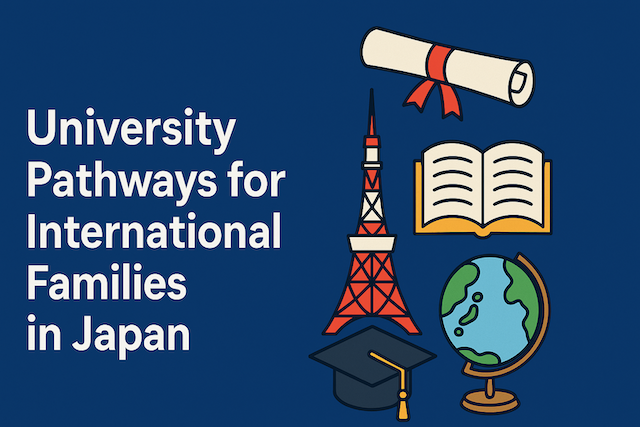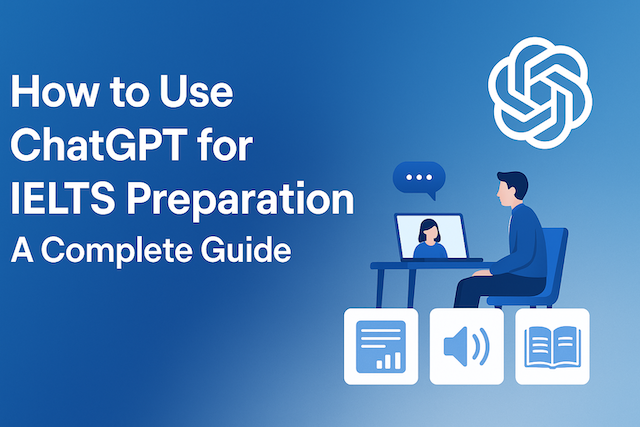University Pathways for International Families in Japan

Contents
- University Pathways for International Families in Japan
- Introduction
- 1. Understanding the Japanese University System
- 2. Pathways to Admission for International Students
- 3. Popular English-Taught Programs in Japan
- 4. Key Admission Components for International Applicants
- 5. Application Timeline (Sample)
- 6. Tuition and Cost of Attendance
- 7. Scholarships and Financial Aid
- 8. Visa and Residency Considerations
- 9. Alternative University Pathways
- 10. Long-Term Planning for Families
- 11. Common Challenges & How to Overcome Them
- 12. Beyond Graduation: Career & Job Search
- Conclusion
- Frequently Asked Questions: University Pathways in Japan
- 1. Can international students apply to Japanese universities without speaking Japanese?
- 2. What is the EJU, and who needs to take it?
- 3. What standardized tests are required for English programs?
- 4. Are there universities in Japan that follow an American-style curriculum?
- 5. What are the tuition costs for international students in Japan?
- 6. Are scholarships available for international students?
- 7. What is the MEXT scholarship and how can I apply?
- 8. Can students work part-time while studying in Japan?
- 9. What documents are required for university applications?
- 10. When should I start applying to universities in Japan?
- 11. Is housing available for international students?
- 12. Can I transfer from a university abroad to a Japanese university?
- 13. Is it possible to study a STEM degree in English in Japan?
- 14. What are foundation or preparatory programs?
- 15. Can I get a job in Japan after graduating?
- 16. What is the visa process for international students?
- 17. What is the PEAK program at the University of Tokyo?
- 18. How competitive are English-based programs?
- 19. What living costs should students expect?
- 20. What support do universities offer to international students?
University Pathways for International Families in Japan
Your Complete Guide to Higher Education Options, Admission Processes, and Planning Strategies
Introduction
As Japan becomes an increasingly attractive destination for international families—whether due to business assignments, long-term relocation, or a desire for cultural immersion—many parents begin to explore the higher education landscape early in their children’s academic journey. Fortunately, Japan offers a growing array of university pathways tailored for international students, ranging from globally ranked institutions to specialized English-language degree programs.
This comprehensive guide outlines the major pathways to universities in Japan for international families, covering types of universities, entrance exams, English-based programs, admission timelines, costs, and long-term visa strategies.
1. Understanding the Japanese University System
Japan has over 700 universities, both public and private, offering programs across a wide range of fields. These institutions fall into several categories:
a. National Universities
Funded by the central government, national universities are known for their research prestige and competitive admissions.
Examples:
-
University of Tokyo (Todai)
-
Kyoto University
-
Osaka University
b. Public (Prefectural or Municipal) Universities
These are run by local governments and are often more affordable but may have fewer English programs.
Examples:
-
Tokyo Metropolitan University
-
Osaka Prefecture University
c. Private Universities
Privately funded institutions with a wide range of offerings. Many offer English-language programs and are more accessible to international students.
Examples:
-
Waseda University
-
Sophia University
-
Ritsumeikan Asia Pacific University (APU)
-
Temple University Japan Campus
2. Pathways to Admission for International Students
There are three main routes into Japanese universities:
a. Traditional Japanese Entrance Exams (Senbatsu)
This is the common path for Japanese students and some advanced international students who are fluent in Japanese. It includes:
-
National Center Test (共通テスト)
-
Individual university exams
Proficiency in Japanese (JLPT N1 or equivalent) is usually required.
b. EJU – Examination for Japanese University Admission for International Students
A standardized test specifically designed for foreign nationals who wish to apply to Japanese-taught university programs.
Subjects include:
-
Japanese as a Foreign Language
-
Science (Physics, Chemistry, Biology)
-
Japan & the World
-
Mathematics
Many top universities use EJU as part of their screening process for foreign applicants to Japanese-taught programs.
c. English-Based Degree Programs (EBDPs)
A growing number of universities in Japan offer entire degree programs in English, especially in Tokyo, Kyoto, Osaka, and Fukuoka.
Benefits:
-
No Japanese required for admission
-
Simplified application process (often includes essays, TOEFL/IELTS, interviews)
-
Diverse student bodies
3. Popular English-Taught Programs in Japan
Here are some of the top institutions offering full undergraduate degrees in English:
| University | Program Examples | Location |
|---|---|---|
| Waseda University | SILS (School of International Liberal Studies), Political Science, Science & Engineering | Tokyo |
| University of Tokyo | PEAK Program (Liberal Arts & Sciences) | Tokyo |
| Sophia University | Faculty of Liberal Arts, Global Studies | Tokyo |
| APU | International Management, Hospitality & Tourism, Media Studies | Beppu, Oita |
| Temple University Japan | American-style curriculum, Business, Communications, Political Science | Tokyo |
| ICU (International Christian University) | Liberal Arts | Tokyo |
| Ritsumeikan University | Community and Regional Policy, International Relations | Kyoto |
| Nagoya University | Automotive Engineering, Physics, Law | Nagoya |
These programs generally accept applications online and may use rolling admissions or multiple intakes.
4. Key Admission Components for International Applicants
a. Language Proficiency
-
English Programs: TOEFL iBT (80–100), IELTS (6.0–7.5), or equivalent
-
Japanese Programs: JLPT N2 or N1 is often mandatory
b. Academic Records
-
Transcripts from previous schools (must be translated into English or Japanese)
-
International qualifications like IB, A-Levels, or APs may be accepted
c. Standardized Tests
-
SAT or ACT (sometimes optional for English programs)
-
EJU for Japanese-taught courses
d. Essays & Interviews
-
Personal statements or motivation essays
-
Video or live interviews for some programs
e. Letters of Recommendation
-
From teachers or academic supervisors
5. Application Timeline (Sample)
For English-taught undergraduate programs:
| Stage | Timeline |
|---|---|
| Research & Prep | 12–18 months before enrollment |
| Application Period | Oct–Feb (for fall intake), or Jan–May |
| Exams/Interviews | 2–3 months after application |
| Results | Typically within 2 months |
| Visa/Enrollment | 3–6 months prior to start date |
Some universities offer Spring and Fall intakes, allowing flexibility.
6. Tuition and Cost of Attendance
Tuition Fees (Annual):
| Type | Cost (JPY) |
|---|---|
| National Universities | ¥535,800 |
| Public Universities | ¥530,000–¥600,000 |
| Private Universities | ¥800,000–¥2,000,000 |
| English Programs (Private) | ¥1,000,000–¥2,500,000 |
Other Expenses:
| Item | Annual Estimate |
|---|---|
| Housing (Dorms or Apartments) | ¥500,000–¥900,000 |
| Books & Supplies | ¥50,000–¥100,000 |
| Health Insurance | ¥20,000–¥30,000 |
| Food & Transport | ¥500,000–¥800,000 |
Total Annual Cost: ¥1.2–3.5 million (USD 8,000–25,000 depending on university and city)
7. Scholarships and Financial Aid
There are several options for international students to receive financial support:
a. JASSO Scholarships
The Japan Student Services Organization provides monthly stipends (¥30,000–¥80,000) based on academic merit and financial need.
b. MEXT Scholarships (Monbukagakusho)
The most prestigious scholarship offered by the Japanese government. It covers:
-
Full tuition
-
Monthly stipend (~¥120,000)
-
Airfare to/from Japan
Applicants must apply via:
-
Japanese embassies (Embassy Recommendation)
-
Universities (University Recommendation)
c. University-Based Scholarships
Many universities offer tuition reduction, entrance scholarships, or merit-based aid, particularly for English programs.
Examples:
-
APU Tuition Reduction (30–100%)
-
Waseda Global Leaders Scholarship
-
ICU Peace Bell Scholarship
8. Visa and Residency Considerations
Students must obtain a Student Visa, sponsored by the admitting university. Required documents:
-
Certificate of Eligibility (COE)
-
Admission letter
-
Financial proof
-
Valid passport
After graduation, students may change their status to a Work Visa if employed by a Japanese company.
Families planning long-term stays should consider Permanent Residency or switching to “Dependent” or “Spouse” visas, where applicable.
9. Alternative University Pathways
a. Foundation / Preparatory Programs
Some universities offer 1-year foundation programs for students without sufficient academic or language background.
b. Community Colleges and Specialized Schools
Japan has colleges that offer 2-year associate degrees or vocational training (専門学校), which can lead to university transfer.
c. Overseas Transfer
Students enrolled in universities abroad can often transfer credits into Japanese institutions, particularly those offering English-taught programs.
d. Online & Hybrid Degrees
Temple University Japan and some global programs allow for partially remote learning with flexible residency.
10. Long-Term Planning for Families
Tips for Parents:
-
Begin planning in Grade 10 or earlier
-
Encourage children to learn Japanese, even for English programs
-
Build an application profile early: extracurriculars, community involvement, English proficiency tests
-
Consider summer programs in Japan (Waseda Summer Session, ICU High School Camps)
-
Budget for hidden costs (trips home, visa renewals, extra tutoring)
11. Common Challenges & How to Overcome Them
| Challenge | Solution |
|---|---|
| Language barrier | Use English programs or supplement with JLPT study |
| Complex applications | Work with school counselors or agents |
| Cultural adjustment | Join international student groups, use university counseling |
| Navigating scholarships | Start research early and use embassy support |
| Finding housing | Use university dorms first, then explore shared apartments or student housing sites like GaijinPot |
12. Beyond Graduation: Career & Job Search
Many English-speaking graduates in Japan find work in:
-
Multinational corporations (finance, IT, marketing)
-
Translation and teaching
-
Hospitality and tourism
-
Government or nonprofit organizations
Career services at universities often include:
-
Resume support
-
Internship matching
-
Job fairs
-
Alumni mentoring
Some universities boast employment rates of over 90% for international students who remain in Japan after graduation.
Conclusion
Japan offers a wealth of options for international families looking to secure high-quality, affordable, and globally recognized university education for their children. From English-taught undergraduate degrees to immersive Japanese-language programs, families can find pathways that suit their children’s strengths and goals.
Whether you plan to stay in Japan short-term or build a life here, understanding the university systems, admission processes, financial landscape, and visa requirements is the key to unlocking long-term academic and career success.
Frequently Asked Questions: University Pathways in Japan
1. Can international students apply to Japanese universities without speaking Japanese?
Yes. Many universities in Japan offer English-Based Degree Programs (EBDPs) that do not require Japanese proficiency. Institutions like Waseda, Sophia, APU, and Temple University Japan offer full degrees in English.
2. What is the EJU, and who needs to take it?
The Examination for Japanese University Admission for International Students (EJU) is required for non-Japanese students applying to Japanese-taught undergraduate programs. It assesses academic ability in Japanese, math, science, and humanities.
3. What standardized tests are required for English programs?
Most English-language degree programs require TOEFL iBT or IELTS scores. Some may also ask for SAT or ACT scores, though these are sometimes optional. Check each university’s admission criteria for specifics.
4. Are there universities in Japan that follow an American-style curriculum?
Yes. Temple University Japan Campus offers a U.S. curriculum entirely in English. Credits are transferable, and degrees are awarded from the U.S.-based Temple University.
5. What are the tuition costs for international students in Japan?
Tuition varies. National universities cost about ¥535,800/year. Private universities typically range from ¥800,000 to ¥2.5 million annually. English-language programs tend to be on the higher end.
6. Are scholarships available for international students?
Yes. Options include MEXT (full scholarships with stipend), JASSO, and university-specific aid. APU and Waseda, for example, offer tuition reductions of up to 100% for top international students.
7. What is the MEXT scholarship and how can I apply?
The MEXT scholarship is a government-funded program that covers tuition, living expenses, and airfare. You can apply through your local Japanese embassy or through a university that recommends students directly.
8. Can students work part-time while studying in Japan?
Yes. Student visa holders can apply for a work permit (up to 28 hours/week during term, 40 hours/week during breaks). Many students work in cafes, convenience stores, or as English tutors.
9. What documents are required for university applications?
Typical documents include: high school transcripts, standardized test scores (TOEFL, SAT), passport copy, personal statement or essay, recommendation letters, and financial statements.
10. When should I start applying to universities in Japan?
Start 12–18 months in advance. Applications for English-based programs often open between October and February for the fall intake. Check each university’s website for exact deadlines.
11. Is housing available for international students?
Most universities offer dormitories for first-year international students. Rent ranges from ¥30,000–¥80,000/month. After the first year, students may move to shared apartments or student residences.
12. Can I transfer from a university abroad to a Japanese university?
Yes, some universities accept transfer students. Requirements vary, but typically include transcripts, course syllabi, and sometimes standardized tests. Temple University Japan and APU are common options for transfers.
13. Is it possible to study a STEM degree in English in Japan?
Yes. Universities like Nagoya University, Osaka University, and Tohoku University offer English-based STEM programs in engineering, data science, and environmental studies.
14. What are foundation or preparatory programs?
Foundation programs are 1-year courses designed to help students build language or academic skills before entering a full degree. These are helpful for students lacking Japanese proficiency or academic qualifications.
15. Can I get a job in Japan after graduating?
Yes. Many international graduates secure employment in Japan. Universities offer job placement support, and graduates can apply to switch their visa to a “Work Visa” category.
16. What is the visa process for international students?
After admission, your university will issue a Certificate of Eligibility (COE). You’ll use this to apply for a student visa at your nearest Japanese embassy or consulate. The visa allows part-time work and residency renewal.
17. What is the PEAK program at the University of Tokyo?
PEAK (Programs in English at Komaba) is an English-taught undergraduate program offering Liberal Arts and Japan in East Asia tracks. It’s highly selective and attracts top global talent.
18. How competitive are English-based programs?
Top programs at Waseda, Todai, and Sophia are competitive, requiring strong academics, essays, and test scores. Others like APU and TUJ offer more accessible admissions and rolling entry.
19. What living costs should students expect?
Average monthly expenses: rent (¥40,000–¥80,000), food (¥30,000–¥50,000), transport (¥5,000–¥10,000), utilities (¥5,000–¥10,000). Total annual cost: ¥1.5–3 million depending on location and lifestyle.
20. What support do universities offer to international students?
Most universities have international centers offering support with visas, language learning, job hunting, counseling, and cultural integration. Orientation programs are also provided to help with adjustment.




